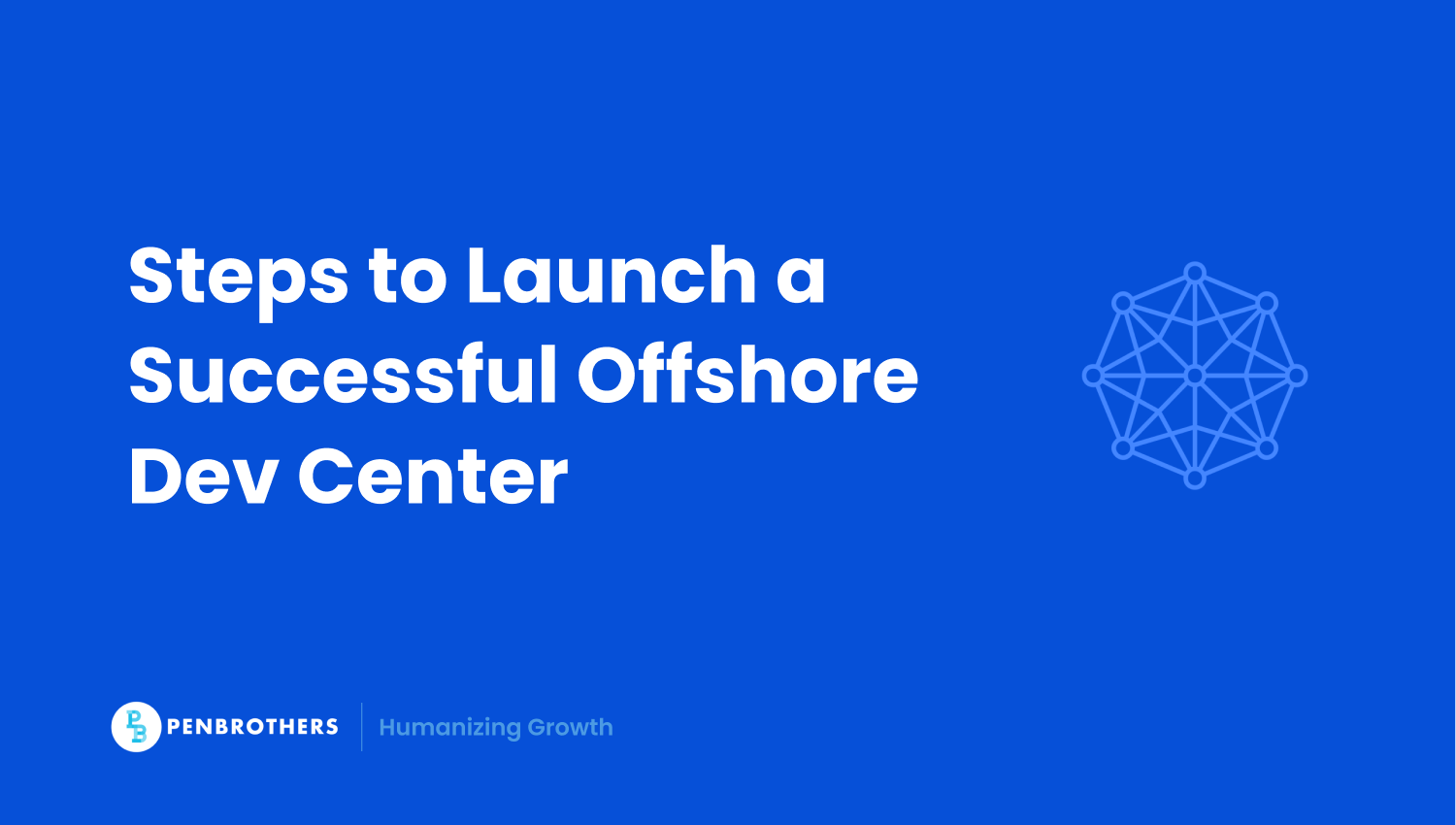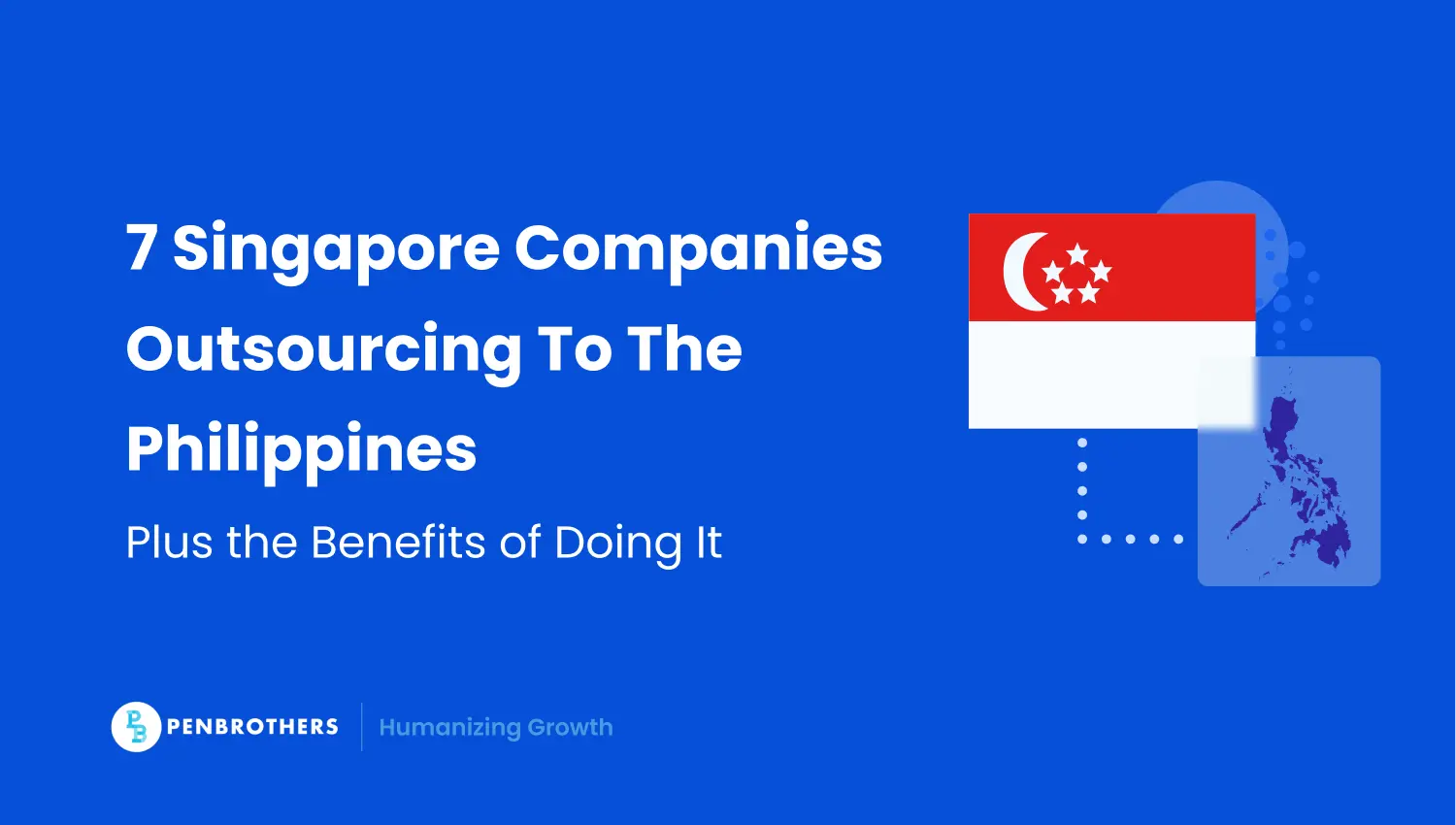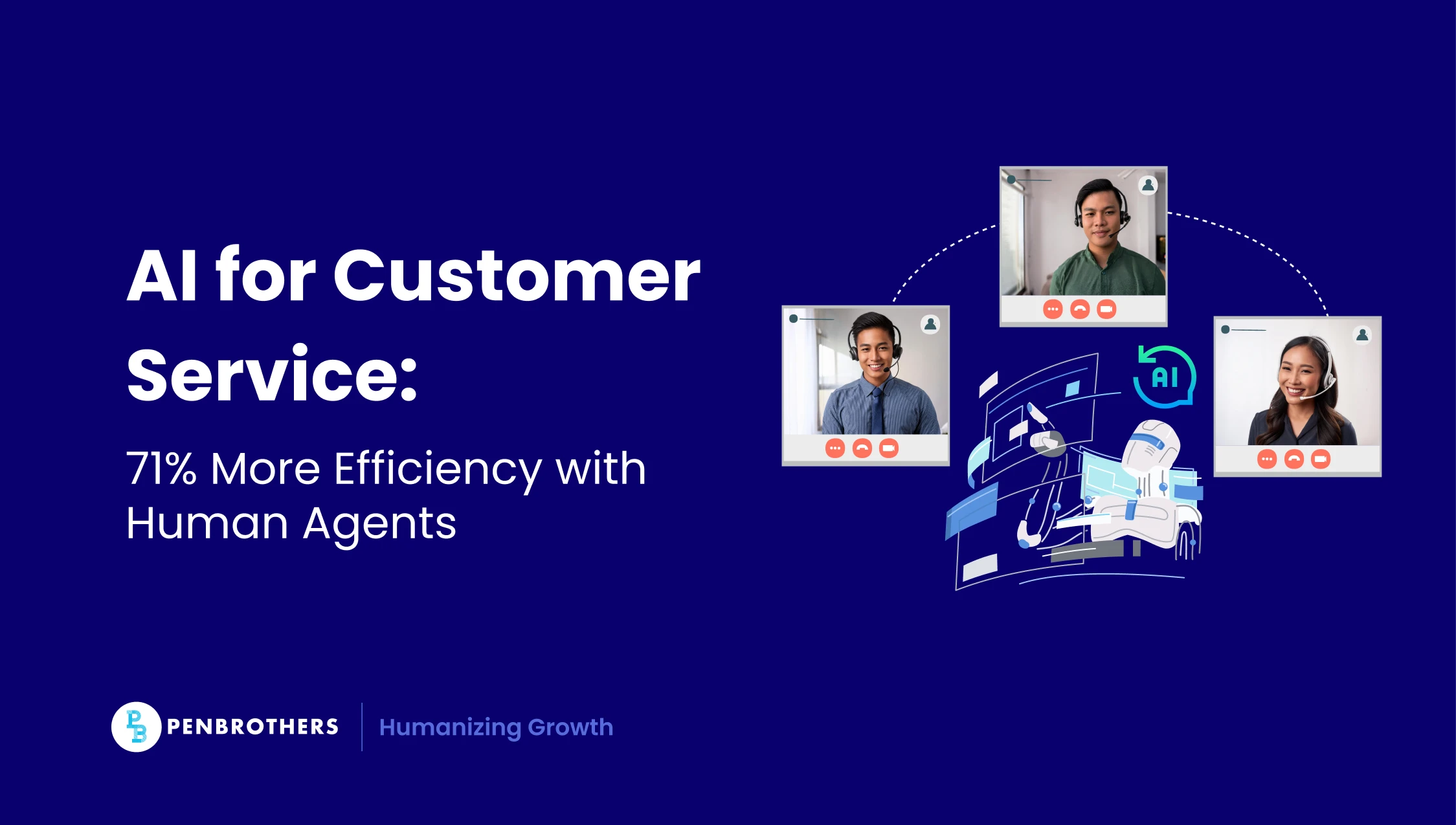What's Inside?
How to Set Up and Run an Offshore Development Center

Offshore Development Centers (ODCs) have become strategic growth engines for companies looking to scale quickly and cost-effectively. They are not just about saving money. They’re about unlocking new capabilities, accessing specialized talent, and creating global development ecosystems. Let’s explore how your business can build, run, and optimize an offshore development center to achieve lasting competitive advantage.
Key Takeaways
- A Strategic Tool for Growth, Not Just Cost-Cutting: An Offshore Development Center (ODC) is primarily a strategic asset for accessing global talent, scaling quickly, and accelerating time-to-market. While cost efficiency is a significant benefit, the main goal is to build a competitive advantage.
- An Integrated Team, Not a Traditional Vendor: A key distinction of the ODC model is that the team operates as a fully integrated extension of your in-house staff. This provides direct control over talent, workflows, and company culture, leading to better alignment and stronger intellectual property protection compared to traditional outsourcing.
- Success Requires a Different Management Approach: Managing an ODC effectively depends on a deliberate strategy for remote collaboration. This includes establishing 3-4 hours of daily overlapping work time for synchronous communication and relying on excellent documentation as a “management superpower” to enable productive asynchronous work.
- Partnerships Mitigate Key Risks: The most common challenges in establishing an ODC—such as navigating cultural differences, time zones, and complex local labor laws—are best solved by choosing a strong location like the Philippines and working with a local partner that handles all compliance, HR, and administrative burdens.
What is an Offshore Development Center?
An offshore development center is a dedicated, remote team of software developers and IT professionals, typically located in a country with a lower cost of living. It operates as an extension of your existing team and integrates with your development workflows and company culture.
Why are ODCs gaining popularity? Because they help you do more with less. Companies are constantly looking for ways to remain agile in a competitive global landscape. ODCs offer a powerful solution for achieving speed, flexibility, and innovation — all while managing costs.
Key benefits include:
- Reduced operating costs
- Access to a wider talent pool
- Greater flexibility and scalability
- Improved focus on core business activities
Who should consider building an ODC? Tech companies, startups, scaleups, and enterprises with aggressive growth goals and complex software development needs. If you’re facing talent shortages or rising development costs, this model may be your next move.
Why Set Up an Offshore Development Center?
Cost Efficiency
Hiring and infrastructure costs are significantly lower in popular ODC destinations like the Philippines, India, and Latin America. According to Deloitte’s 2022 Global Outsourcing Survey, 57% of executives indicate that cost reduction remains the primary driver of traditional outsourcing strategies.
Explore how companies are unlocking massive savings in the Philippines.
Access to Global Talent
With over 28.7 million software developers worldwide, the global talent pool is vast and growing. ODCs enable you to tap into niche technical skill sets that are hard to find or expensive to hire locally.
Scalability & Flexibility
Whether you need to grow your engineering team fast or adjust to changing priorities, ODCs give you operational agility. You can scale resources up or down without the long lead times and overhead costs of local hiring.
Faster Time-to-Market
With time zone coverage and 24/7 development cycles, your team can continuously move projects forward — even while you sleep. This accelerated workflow helps reduce release cycles and gives you a competitive edge in fast-moving markets.
Offshore Development Center vs. Traditional Outsourcing
While outsourcing typically means handing over project ownership to a third party, an ODC is fully integrated with your business.
Key differences:
| Key Factor | Offshore Development Center (ODC) | Traditional Outsourcing |
| Control | Direct oversight and management; full alignment with company goals. | Limited control; project managed externally by a third-party provider. |
| Customization | You choose the talent, tech stack, tools, and workflows. | Predefined team structures and processes; limited flexibility. |
| Cultural Alignment | Teams adopt your company’s culture, values, and operating style. | Often operate independently with their own internal processes and communication norms. |
| Cost Efficiency | Requires upfront investment, but delivers higher long-term ROI and operational value. | Lower short-term cost, but may lead to hidden fees and inefficiencies. |
| Integration | Functions as an extension of your internal team — not just a vendor. | Operates as a separate entity with minimal integration into your core business operations. |
| IP & Risk Management | Offers better protection of intellectual property and reduces dependency risks. | Greater risks around IP, data security, and vendor lock-in. |
If you want to maintain intellectual property, streamline communications, and avoid dependency risks, ODCs offer a better path forward.
Choosing the Right Offshore Development Center Model
There are two widely used models for ODCs:
1. Contractor ODC Model
Your offshore partner handles recruitment, HR, office space, and admin operations. You focus on project and team management. This model is ideal if you want to avoid operational headaches.
2. Customer ODC Model
You own everything — from hiring to infrastructure. This model gives maximum control but requires greater effort and internal resources.
At Penbrothers, we offer a hybrid approach. We manage legal compliance, payroll, HR, and workspace needs, so you can focus on building a high-performing team in the Philippines without the red tape.
Key Steps to Setting Up an Offshore Development Center
- Define Objectives & Scope
Clarify what roles you need, the team size, the skills required, and your long-term business goals. A clear scope ensures your offshore team is purpose-built to support your product roadmap and business strategy. - Select the Right Location
Look for regions with strong English proficiency, cultural compatibility, and competitive cost structures. The Philippines is often top-of-mind for these reasons. The Philippines ranks 22nd in the 2024 EF English Proficiency Index, ensuring strong communication skills for global collaboration. - Legal & Compliance Considerations
Every country has its own employment laws, data privacy rules, and tax codes. Failure to comply can result in penalties, reputational damage, or even suspension of operations — making expert guidance essential. - Choose the Right Hiring Model
Consider whether you’ll build from scratch, work with an agency, or partner with a staffing provider like Penbrothers. Each option affects your speed to launch, cost structure, and level of control — so align your choice with your business maturity. - Infrastructure & Tools Setup
Your ODC should be equipped with the right tools, tech stack, cybersecurity protocols, and communication platforms for smooth collaboration. Ensure compatibility with your existing systems to avoid integration delays or misaligned workflows.
Explore how top companies optimize remote infrastructure.
Challenges in Establishing an Offshore Development Center (And Solutions)
Cultural & Communication Barriers
Different work styles can lead to misunderstandings. Provide cultural onboarding and train leaders to foster empathy and clarity. Consistent feedback loops and inclusive communication practices help bridge cultural gaps over time.
Time Zone Differences
Overlap working hours and use asynchronous tools like Loom or Notion to maintain productivity. This enables smoother collaboration without the need for constant real-time availability.
Legal & Compliance Risks
Local labor laws and tax codes vary. Partner with providers like Penbrothers who handle compliance and reduce your risk exposure.
Staying compliant protects your business from legal penalties and ensures ethical employment practices.
Knowledge Transfer & Alignment
Make onboarding seamless. Document processes clearly. Assign mentors to help offshore teams ramp up quickly. Effective knowledge transfer builds long-term consistency and minimizes disruptions in project delivery.
How to Manage an Offshore Development Team?
Managing offshore developers requires different muscles than managing local teams. The principles remain constant (clear communication, defined expectations, regular feedback), but the execution changes dramatically.
Start with overlapping hours, not 24/7 coverage. Some companies chase round-the-clock development cycles and create coordination nightmares instead. Find 3-4 hours of daily overlap where both teams are fresh and focused. For US companies working with Philippine teams, 6-10 PM Pacific works perfectly. You get morning energy from Manila, evening focus from California.
Documentation becomes your management superpower. Every decision, every standard, every process needs a written form. Not because you don’t trust your team, but because async communication demands clarity. Your offshore developers will reference these documents at 3 AM your time when they hit roadblocks. Good documentation prevents blocked work and frustrated developers.
Create cultural bridges through structured interaction. Weekly one-on-ones aren’t enough. You need daily standups where offshore developers lead discussions. Monthly all-hands where they present their work. Quarterly virtual coffee chats that aren’t about work at all. The goal is transforming “them” into “us” through consistent, meaningful interaction.
Invest in your offshore team leads like they’re future CTOs. Because they might be. Your lead developer in Manila needs to understand your business strategy, not just your tech stack. They need authority to make decisions when you’re asleep. They need direct access to you, not filtered through layers of management. When you elevate offshore leads, entire teams elevate with them.
The tools matter less than how you use them. Slack for quick questions. Loom for complex explanations. Linear for task tracking. GitHub for code reviews. But the magic happens in the protocols. Response time expectations. Escalation paths. Decision-making frameworks. Your offshore team needs to know not just what tools to use, but when and why to use them.
Here’s what successful offshore management actually looks like: Your Manila team lead messages you at 8 PM Pacific about an architectural decision. You discuss for 15 minutes, agree on direction. They implement overnight with their team. You wake up to a pull request, review over coffee, merge before your local team arrives. The project moves forward continuously, not in start-stop bursts.
Best Practices for Managing an Offshore Development Center
Clear Communication Strategies
Daily standups, weekly syncs, and transparent project management tools (like Trello or Notion) keep everyone aligned. Reinforce shared goals and encourage open dialogue to minimize misunderstandings.
Set Expectations & KPIs
Align on timelines, quality benchmarks, and individual roles from the start. Performance tracking keeps teams accountable. Well-defined KPIs create a shared sense of ownership and direction.
Ongoing Performance Monitoring
Regular feedback loops, 1-on-1s, and team reviews allow you to make continuous improvements without micromanaging. This approach encourages growth while maintaining autonomy.
Invest in Culture
Celebrate wins, recognize talent, and promote collaboration across geographies. Make your offshore team feel like a true part of the company. Stronger team culture leads to better retention, engagement, and output.
Conclusion & Next Steps
The offshore development center model isn’t just a cost-cutting tactic — it’s a growth enabler. When done right, it brings together the best of global talent, operational efficiency, and scalability.
Penbrothers makes this process seamless. We help global companies set up, run, and scale offshore teams in the Philippines — without the hassle. From hiring to payroll to retention, we handle the back office so you can focus on building what
Success Story: Servantex’s Offshore Success
Servantex, a U.S.-based workforce management firm, needed to scale internal support as its business rapidly grew. By partnering with Penbrothers, they built an offshore service center in the Philippines — starting with one accounting specialist and expanding to over 30 professionals handling payroll, billing, and CRM tasks.
Through our Hypercare model, which provides tailored onboarding and ongoing support, Servantex achieved 69% savings on labor costs while improving operational efficiency. Their offshore team didn’t just fill roles — they became a seamless extension of their U.S. workforce.
Ready to explore the offshore development model? Let’s build your global team, together.
Frequently Asked Questions (FAQs)
An ODC is a dedicated, remote team of software developers and IT professionals located in another country. It is not a temporary project team but a long-term, fully integrated extension of your company’s in-house team, aligned with your workflows and culture.
With traditional outsourcing, a company typically hands over an entire project to an external vendor, resulting in limited control. With an ODC, a company builds and manages its own dedicated team, maintaining direct oversight over the talent, processes, and culture. The ODC is part of your organization, not just a supplier.
The primary benefits include significant cost efficiency in hiring and infrastructure, access to a global talent pool with specialized technical skills, the flexibility to scale the team up or down quickly, and a faster time-to-market for products due to the potential for 24/7 development cycles.
The most common challenges are managing cultural and communication barriers, navigating time zone differences, and handling complex local legal and compliance risks. These are typically solved through structured cultural onboarding, using a mix of overlapping hours and asynchronous tools, and working with a local partner who can manage legal and HR requirements.
The best practice is to establish 3-4 hours of daily overlapping work time for real-time collaboration and decision-making. For the rest of the day, rely on excellent documentation and asynchronous communication tools (like Loom or Slack) to ensure the team can work productively and independently when you are offline.
*This article was crafted with the support of AI technology and refined by a human editor.





